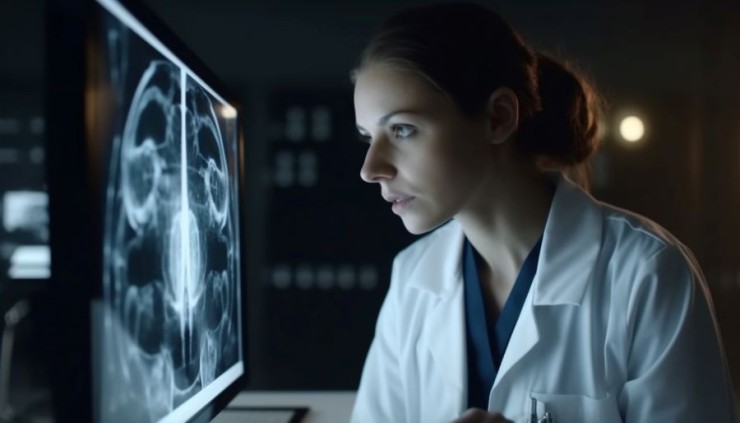
Lymphoscintigraphy is a specialized imaging technique that utilizes radioactive tracers to visualize the lymphatic system.
Lymphoscintigraphy in India with Cost
Lymphoscintigraphy in
Detail: Navigating the Lymphatic System for Diagnostic Precision
In the realm of nuclear medicine, Lymphoscintigraphy emerges as a valuable diagnostic tool, offering insights into the dynamics of the lymphatic system. This detailed guide aims to unravel the significance, procedure, and applications of Lymphoscintigraphy, providing a comprehensive understanding of its role in medical imaging.
Introduction
Lymphoscintigraphy is a specialized imaging technique that utilizes radioactive tracers to visualize the lymphatic system. This diagnostic tool plays a crucial role in mapping lymphatic drainage patterns, identifying abnormalities, and aiding in the diagnosis and management of various medical conditions.
Understanding Lymphoscintigraphy Imaging
Radioactive Tracer Administration:
The process begins with the administration of a small amount of a radioactive tracer, often technetium-99m, near the area of interest, such as a tumor or the site of surgery.
Tracer Uptake and Migration:
The radioactive tracer is taken up by lymphatic vessels and nodes, mimicking the natural flow of lymphatic fluid. The tracer's journey is tracked in real-time, providing dynamic imaging data.
Gamma Camera Imaging:
A gamma camera captures images of the distribution of the radioactive tracer, offering detailed visualizations of lymphatic pathways and identifying any abnormalities.
Importance in Diagnostic
Imaging
Lymphoscintigraphy holds significant importance in various medical scenarios:
Sentinel Lymph Node Mapping: Particularly
crucial in cancer staging and surgery, identifying the first lymph node(s) to
receive drainage from a tumor.
Lymphatic System Assessment: Aiding in the
evaluation of lymphatic function and identifying potential obstructions or
abnormalities.
Edema Investigations: Assessing and
mapping the lymphatic system in cases of localized swelling or edema.
Preparation for
Lymphoscintigraphy
Preparation for a Lymphoscintigraphy procedure may involve:
No Fasting: Typically, patients do not need to
fast before the scan.
Medication Adjustments: Temporary
cessation or adjustment of certain medications that may interfere with the scan.
Procedure: Navigating
the Lymphatic System
Radioactive Tracer Administration: The radioactive tracer
is injected near the site of interest, such as a tumor or surgical site.
Tracer Uptake Period: The tracer is
taken up by lymphatic vessels and nodes, mirroring the natural flow of
lymphatic fluid.
Gamma Camera Imaging: The gamma camera captures images, displaying the
tracer's distribution and migration in the lymphatic system.
Assessment Areas in
Lymphoscintigraphy
Lymphoscintigraphy is employed to assess various aspects of the lymphatic system, including:
Sentinel Lymph Node Identification: Crucial in
cancer staging, surgery, and treatment planning.
Lymphatic System
Evaluation: Identifying abnormalities,
obstructions, or altered drainage patterns.
Edema Investigations: Assessing the lymphatic system in cases of
localized swelling or edema.
Benefits of
Lymphoscintigraphy
Sentinel Node Mapping: Provides precise mapping of
sentinel lymph nodes in cancer cases, guiding surgical interventions.
Lymphatic System Visualization: Offers
real-time visualization of lymphatic flow, aiding in diagnostic assessments.
Minimally Invasive
Nature: A minimally invasive
procedure that provides valuable information without the need for extensive
surgery.
Risks and Considerations
Lymphoscintigraphy involves exposure to low levels of radiation. However, the benefits of accurate lymphatic system assessment generally outweigh the associated risks.
Clinical Applications
Lymphoscintigraphy finds applications in various clinical scenarios, including:
Cancer Staging: Identifying sentinel lymph nodes
for precise cancer staging.
Surgical Planning: Guiding surgeons in identifying lymph nodes for
biopsy or removal.
Lymphedema Assessment: Evaluating the
lymphatic system in cases of localized swelling.
Expert Perspectives
Nuclear medicine specialists and surgeons collaborate to interpret Lymphoscintigraphy results, providing expert insights into lymphatic system function and potential abnormalities.
Technological Advancements
Continual advancements in imaging technology contribute to the refinement of Lymphoscintigraphy, enhancing image resolution and diagnostic capabilities.
Patient Experience
Lymphoscintigraphy is generally well-tolerated by patients, involving minimal discomfort during the injection and imaging process. The procedure provides valuable information to healthcare providers without invasive measures.
Conclusion
In conclusion, Lymphoscintigraphy emerges as a valuable tool in the realm of nuclear medicine, offering a dynamic and real-time perspective on the lymphatic system. Its applications in sentinel node mapping, cancer staging, and lymphatic system assessments contribute to informed decision-making in medical diagnosis and treatment.
Frequently Asked
Questions (FAQs) about Lymphoscintigraphy
1. What is the primary purpose of Lymphoscintigraphy?
Lymphoscintigraphy is primarily used to map the lymphatic system, identify sentinel lymph nodes, and assess lymphatic function. It plays a crucial role in cancer staging, surgery planning, and evaluating conditions such as lymphedema.
2. How is the radioactive tracer administered during Lymphoscintigraphy?
The radioactive tracer, often technetium-99m, is administered near the area of interest, such as a tumor or surgical site. It can be injected subcutaneously or intradermally.
3. Is Lymphoscintigraphy a painful procedure?
No, Lymphoscintigraphy is generally well-tolerated and minimally invasive. Patients may experience mild discomfort during the injection, but the procedure itself is not painful.
4. What are the common applications of Lymphoscintigraphy in cancer care?
Lymphoscintigraphy is widely used in cancer care for sentinel node mapping. It helps identify the first lymph node(s) that receive drainage from a tumor, aiding in cancer staging and surgical planning.
5. Are there any specific preparations required before undergoing Lymphoscintigraphy?
Typically, there is no fasting required before Lymphoscintigraphy. However, patients may be advised to temporarily adjust or cease certain medications that could interfere with the scan.
6. How long does a Lymphoscintigraphy procedure take?
The duration of a Lymphoscintigraphy procedure varies, but it generally takes a few hours. This includes the time for tracer uptake, imaging, and any necessary waiting periods.
7. What conditions can Lymphoscintigraphy help diagnose or assess?
Lymphoscintigraphy is valuable in diagnosing and assessing various conditions, including cancer staging, lymphatic system abnormalities, and localized swelling or edema.
8. Are there any risks associated with Lymphoscintigraphy?
Lymphoscintigraphy involves exposure to low levels of radiation. However, the benefits of accurate lymphatic system assessment usually outweigh the minimal risks. Pregnant or nursing women may need special considerations.
9. Can Lymphoscintigraphy be used for non-cancer-related conditions?
Yes, Lymphoscintigraphy is versatile and can be employed to assess and diagnose conditions beyond cancer. It is particularly useful in evaluating lymphatic system function and identifying abnormalities.
10. How soon can patients resume normal activities after undergoing Lymphoscintigraphy?
Following the procedure, most patients can typically return to their regular activities right away. However, individual cases may warrant specific instructions, and patients might be recommended to maintain proper hydration.
(0)
Login to continue



